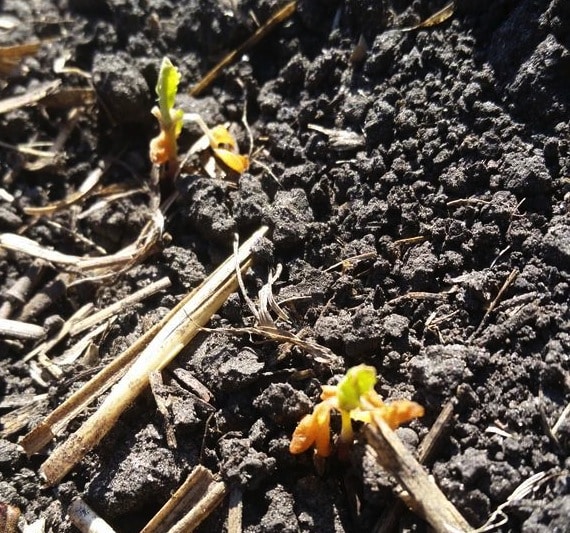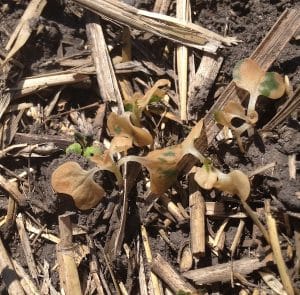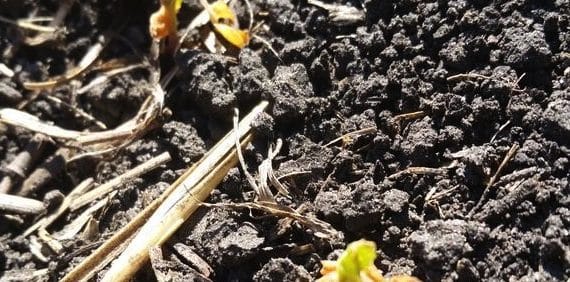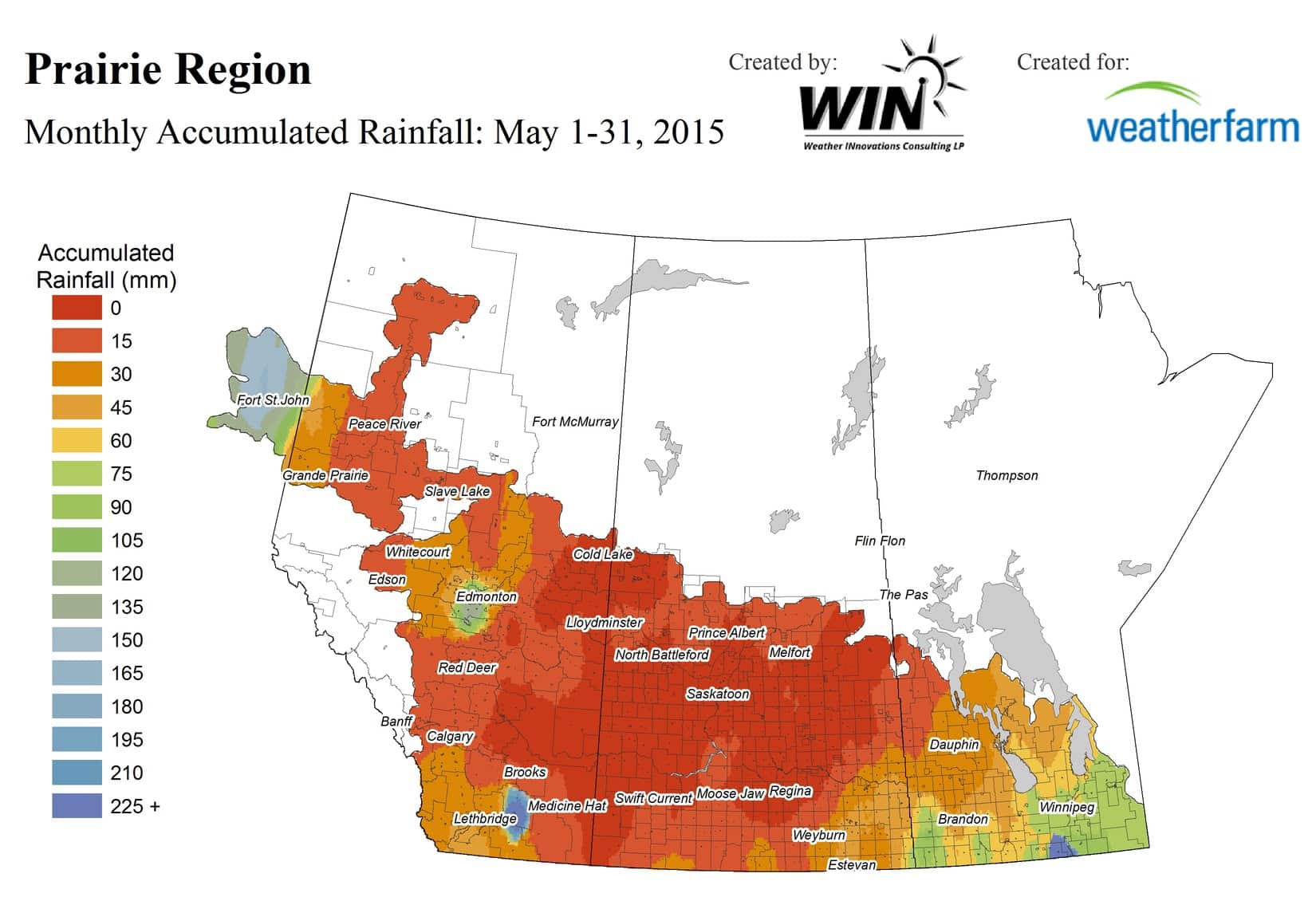

Widespread heavy frost on the weekend was the last straw for many canola fields that were already under stress from previous frosts, flea beetles, wind, dry conditions (see the map below) and in some cases excess moisture.
With seed company rebates to buy seed a second time and with crop insurance coverage, the economics of reseeding may be better than they once were. Growers may choose to reseed as a last effort to save what has been a stressful May for some canola crops.
However, canola can be surprisingly resilient — as shown in the photo from Terry Betcher of Swan River, Manitoba. Canola crops with 1-2 well established plants per square foot may still have more yield potential and therefore better economics than a reseeded crop. And leaving the original stand saves the time and hassle required to reseed.
Another point is that not all fields within a particularly hard-hit area will need to be reseeded. Take a moment to assess each field. If not all seeds have emerged, say in dry conditions or in very recently seeded fields, enough of this seed may emerge to provide a decent crop.
One more note on dry conditions. Seeds are often still viable but waiting for moisture to start the germination process. Reseeding is not likely to provide a benefit in this case.
Crop insurance speeds the assessment process for reseeding benefits in 2015:
Manitoba: For 2015 only, MASC will allow producers to reseed canola without an adjustor inspecting the field. There are some limitations: (1) Producer must contact his local MASC insurance office to register a claim first. (2) Producer must receive verbal approval by MASC staff to reseed without an adjustor checking (not all areas of MB are included). (3) The new procedure only applies to fields of canola that will be reseeded back to canola.
Saskatchewan: Producers can reseed without first having their establishment benefit claim adjusted. Once producers register their establishment benefit claim with their local Crop Insurance office, they can reseed the damaged field. However, the producer is to leave check strips so the adjuster can verify the damage to the newly established crop.
SCIC would encourage producers, who are concerned about frost damage to newly emerged crop, to contact their local Crop Insurance office. SCIC staff will be able to discuss with the producer the options available including whether a claim can be registered, the deadlines for reseeding in their area and the requirements for reseeding.
Alberta: Producers requesting a reseed inspection must contact AFSC before proceeding in order to be eligible for a reseeding benefit. If the cause of loss has been determined for an area by AFSC On Farm Inspectors, the Branch Office may release the reseed and give the producer authorization to reseed. If the area has not been inspected by AFSC On Farm Inspectors, Branch Office staff will create the reseed inspection and an inspector is required to check the field before releasing it for the reseed.
Further reading:
Broadcast option for faster reseeding
Management for a thin stand
Help for the reseeding decision – scenarios
Prairie rainfall accumulation for May:

